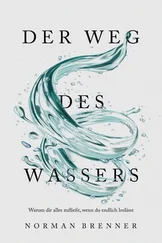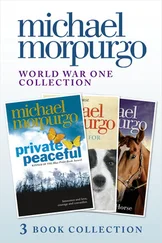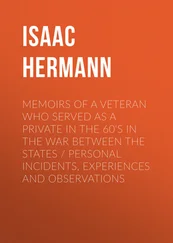¬
For Colvin, the facts were clear: A murderous dictator was bombarding a city that had no food, power, or medical supplies. NATO and the United Nations stood by doing nothing. In a nearby village, hours before they left, Conroy had watched her trying to get a signal and file her story for the next day’s paper on her vintage satellite phone. “Why is the world not here?” she asked her assistant in London. That question, posed by Colvin so many times before—in East Timor, Libya, Kosovo, Chechnya, Iran, Iraq, Sri Lanka—was the continuing theme of her life. “The next war I cover,” she had written in 2001, “I’ll be more awed than ever by the quiet bravery of civilians who endure far more than I ever will.”
Surrounded by members of the Free Syrian Army, Colvin had gathered the essentials for the return trip: the Thuraya SAT phone, a battered laptop, La Perla briefs, and her lucky copy of Martha Gellhorn’s The Face of War , essays detailing wars, many of them waged before Colvin was born. At night, she would often reread Gellhorn’s leads: War started at 9:00 o’clock promptly.
“Hey, Marie, welcome back to hell,” said a Syrian activist huddled on the floor of the media center. All the other reporters had left. As always, when she was in a Muslim country, the first thing Colvin did was take her shoes off and leave them in the hall. In Syria, she found herself in a still-uncharted arena for war reporters—a YouTube war. She and Conroy watched as Syrian activists uploaded videos of the battle of Homs. “I am in a place where the locals are uploading videos etc so I think internet security is pretty much out the window,” she had emailed her editor.
At 11:08 p.m., she emailed Richard Flaye, the current man in her life:
My darling, I have come back in to Baba Amr, the besieged neighbourhood of Homs, and am now freezing in my hovel with no windows. I just thought, I cannot cover the modern day Srebrenica from the suburbs. You would have laughed. I had to climb over two stone walls tonight, and had trouble with the second (six feet) so a rebel made a cat’s cradle of his two hands and said, ‘Step here and I will give you a lift up.’ Except he thought I was much heavier than I am, so when he ‘lifted’ my foot, he launched me right over the wall and I landed on my head in the mud!… I will do one more week here, and then leave. Every day is a horror. I think of you all the time, and I miss you.
It was the last email she would ever send him.
THE SILVER GIRL
I arrived in London a few weeks after Colvin’s death forced the world to pay attention to the atrocities in Syria. It was a brutal winter for journalists: Anthony Shadid, forty-three, of the New York Times , had died while attempting to cross the Syria-Turkey border. The French photographer Rémi Ochlik had been killed along with Colvin. At Rupert Murdoch’s press empire, there were charges of hacking phones, bribing police, and trading favors with prime ministers. The company was in desperate need of a Joan of Arc, and in Colvin it found one. As foreign staffs around the world had been disbanded because of budget cuts and threats to reporters’ security, Colvin’s process still resembled Martha Gellhorn’s. Her notes were meticulously kept in spiral notebooks lined up on her office shelf at her house in Hammersmith, on the Thames. Nearby, a stack of business cards: Marie Colvin, foreign affairs correspondent. The role had defined her and had become, tragically, irrevocable.
Colvin’s boldness in war zones across the world could appear like a form of derring-do or addiction to the poison elixir of battle, as one reporter called it, but the truth was more complex. For years, the ferocious competition for scoops in the British foreign press thrilled Colvin and completely suited her nature. More, she had a deep commitment to reporting the truth.
By accident, I was an hour early for the celebration in Colvin’s honor at the Frontline Club, a gathering spot for journalists near Paddington Station. Organizers were trying to make the sound system work, and suddenly Colvin’s voice filled the room. She appeared on a TV monitor in a car outside an Iraqi prison in 2003. To her fixer in the backseat, Colvin says with fierce quiet, “Calm down. You getting excited makes the situation worse.” Then, to the driver, “Get out of here!” The steadiness of her gaze stops all debate. The footage came from Barbara Kopple’s 2005 documentary, Bearing Witness .
Among the scores of guests were Colvin’s editors John Witherow and Sean Ryan, the actress Diana Quick, and Vanity Fair ’s London editor, Henry Porter. The historian Patrick Bishop, an ex-husband, and a number of former lovers were there, along with Flaye, as well as intimate friends, including the author Lady Jane Wellesley; two Bonham Carter sisters, Virginia and Jane; Rosie Boycott, the former editor of the Daily Express and the Independent ; and British Vogue editor Alexandra Shulman. The room also held dozens of young reporters whom Colvin had mentored with her astonishing generosity. “You always have to think about the risk and the reward. Is the danger worth it?” she had once advised Miles Amoore in Afghanistan.
From her earliest days as the American girl in the small, clubby world of British journalism, Colvin appeared to play beautifully into the paradigm of reporting as a bit of a lark, not to be taken too seriously, as if she had parachuted in from the pages of Evelyn Waugh’s Scoop . In truth, Colvin identified with her subjects and found her own emotions in their plights. Her particular talent was giving voice to the voiceless—widows holding their mangled husbands in Kosovo, Tamil Tigers rebelling against the government in Sri Lanka. “The first sound of trouble was the screams of two little old ladies who slashed themselves on the razor coils topping the walls of the United Nations compound, desperate to enter,” Colvin had reported from the East Timor city of Dili in 1999. It was, she always believed, her finest hour. For four days straight, she broadcast the plight of a thousand victims, mostly women and children, trapped in a siege that had killed thousands of Timorese. “Who’s there?… Where have all the men gone?” her editor in London asked when she announced that she and two female Dutch journalists had stayed behind to help the stranded refugees. “They just don’t make men like they used to,” she replied. The line would become part of her growing legend.
Colvin’s story recounting the river of blood that flowed out of her mouth when she was left to die in Sri Lanka in 2001 also became part of her myth, as would the quiet eloquence that set her apart from the cliché of the war correspondent as adrenaline junkie with a death wish. “Bravery is not being afraid to be afraid,” she said when she accepted an award for her work in Sri Lanka.
Though her dispatches brought her numerous awards and fame in England and in every major conflict zone in the world, she was less known in her own country. Unlike Gellhorn, she did not leave a literary legacy; her genius was for low-to-the-ground newspaper reporting. Her writing had a strong moral undertow. She functioned best when she was on the scene. In spite of the massive changes of the last twenty-five years brought on by the high-tech presence of Twitter and YouTube, Colvin continued to believe that war reporting remained the same: You had to be there. “How do I keep my craft alive in a world that doesn’t value it? I feel like I am the last reporter in the YouTube world,” she told her close friend Katrina Heron. “I am inept with technology.” Heron, the former editor of Wired , sent her frequent tech advice.
She pushed into combat zones that made her drivers sometimes vomit from fear. Yet she dreaded becoming “this smelly, exhausted pseudo-man,” as she wrote in British Vogue in 2004 when explaining her “defiant preference” for satin and lace underwear in the trenches. In the hospital recovering from shrapnel wounds in the head and chest in Sri Lanka, she received a missive from her editor, who had seen pictures of her wounded and seminaked in the field. He asked her to “tell us about your lucky red bra.” He did not realize that the bra was “cream (lace cups, double satin straps) but had turned red because it was drenched in my blood,” Colvin wrote. She added that militia had broken into her hotel room in East Timor and that “all my La Perla knickers and bras had been stolen. How weird is that?” They had “left behind a radio, tape recorder… even a flak jacket.” Not long before she left for Homs, she told Heron, “I would like to have a saner life. I just don’t know how.”
Читать дальше












